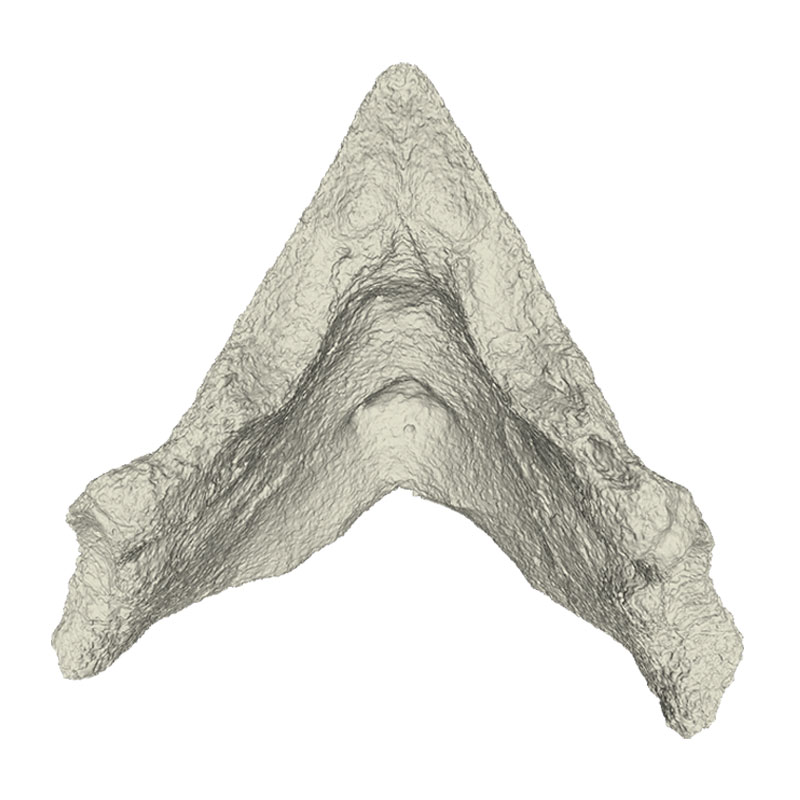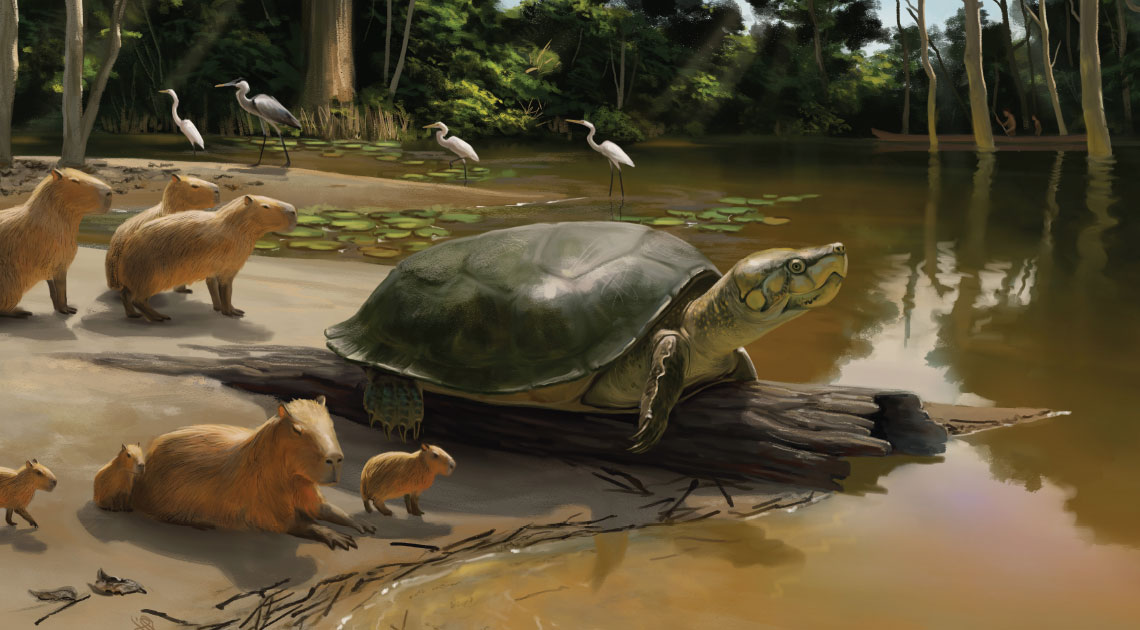
Christina Kyriakouli / Senckenberg Research InstituteA three-dimensional model of the fossilized jawChristina Kyriakouli / Senckenberg Research Institute
When humans first arrived in the Amazon, they might have found huge turtles swimming in the waters of what is now the Madeira River basin. According to initial estimates, the fossilized jawbone found in the Porto Velho region of Rondônia is from this era—between 40,000 and 9,000 years ago. The fossil was used to describe a new species called Peltocephalus maturin, an omnivorous river turtle with a shell measuring around 1.8 meters in length, making it one of the five largest turtles ever described. It is, however, closely related to a much smaller species called P. dumerilianus, which currently inhabits rivers in the Amazon. “Between the end of the Pleistocene and the beginning of the Holocene, there was a megafauna composed primarily of mammals. This newly discovered animal deviates from the norm,” explains paleontologist Max Langer of the University of São Paulo (USP), Ribeirão Preto campus, who supervised the postdoctoral fellowship of the lead author, Gabriel Ferreira. The date is important because it is consistent with a hypothesis that humans contributed to their extinction through excessive hunting, something usually considered more influential in the fate of mammals such as sloths and giant armadillos. The new species is named after the giant tortoise Maturin, a character created by American writer Stephen King. The fossil was found by a miner looking for gold at the Taquaras mine. For paleontologists, it is worth much more than gold (Biology Letters, March 13).

Julia Oliveira Artistic depiction of Peltocephalus maturin, living with animals similar to present-day capybarasJulia Oliveira